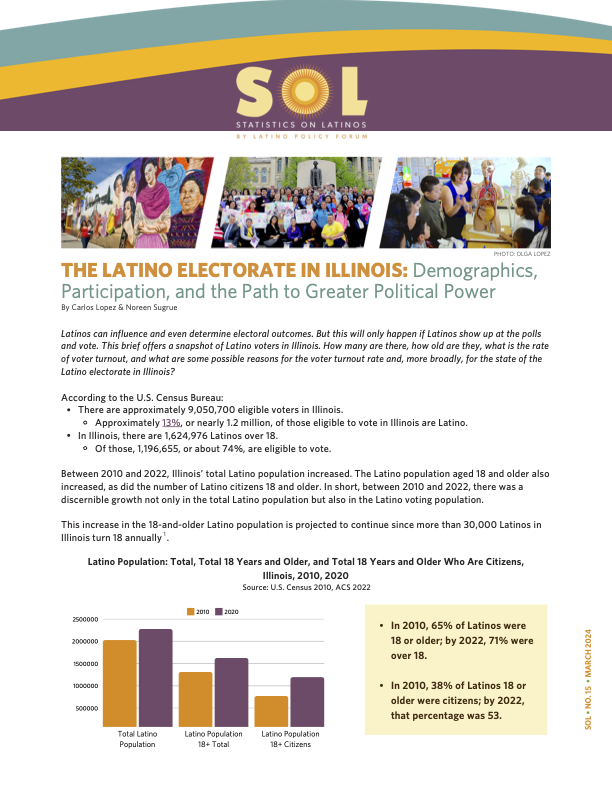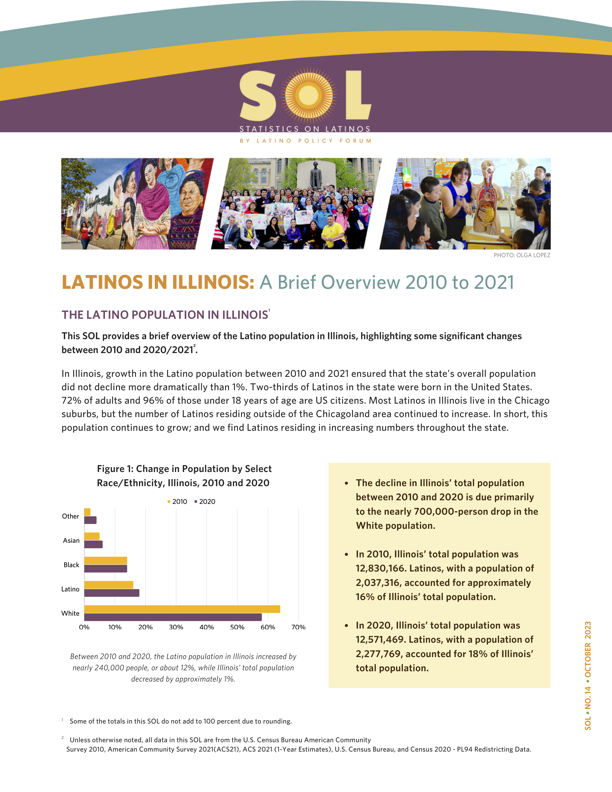Statistics on Latinos: The Latino Electorate in Illinois – Demographics, Participation, and the Path to Greater Political Power
Latinos can influence and even determine electoral outcomes. But this will only happen if Latinos show up at the polls and vote. This brief offers a snapshot of Latino voters in Illinois. How many are there, how old are they, what is the rate of voter turnout, and what are…
Statistics on Latinos: Latinos in Illinois: A Brief Overview 2010 – 2021
In Illinois, growth in the Latino population between 2010 and 2021 ensured that the state’s overall population did not decline more dramatically than 1%. Two-thirds of Latinos in the state were born in the United States. 72% of adults and 96% of those under 18 years of age are US…
Closing the Latino wealth gap: Exploring regional differences and lived experiences
The Latino community is not a monolith. Accordingly, Latino wealth should be examined from all angles, taking into consideration Latinos’ differentiating factors, such as racial diversity, immigration status, migration timing, geography, generational differences, and how these factors correlate with wealth-building. The Latino Policy Forum and Brookings Institution partnered to examine…
Illinois Latino College Landscape Study
In 2021, only 26% of Latino adults aged 25 to 64 in Illinois earned associate degrees or higher, the lowest educational attainment of all racial/ethnic groups. To better understand the educational attainment disparity, the Latino Policy Forum initiated the Illinois Latino College Landscape Study in partnership with the Illinois Workforce and Education…
Long-Term Socioeconomic Consequences of COVID in the Latino Community: Creating a Path Forward
Undoubtedly, the COVID-19 pandemic, including “long COVID,” has created extensive and profound negative impacts on populations across the US AND devastated the health landscape in many ways, including over 96 million diagnosed cases leading to over one million deaths in just two years. At the same time, COVID has created…






